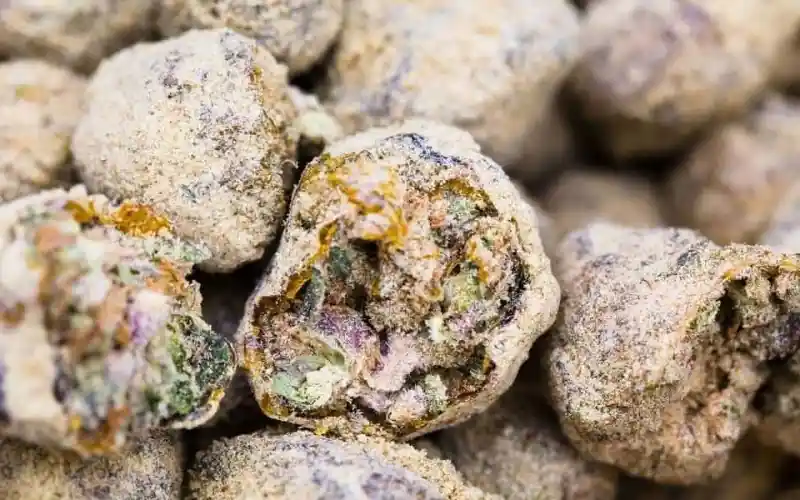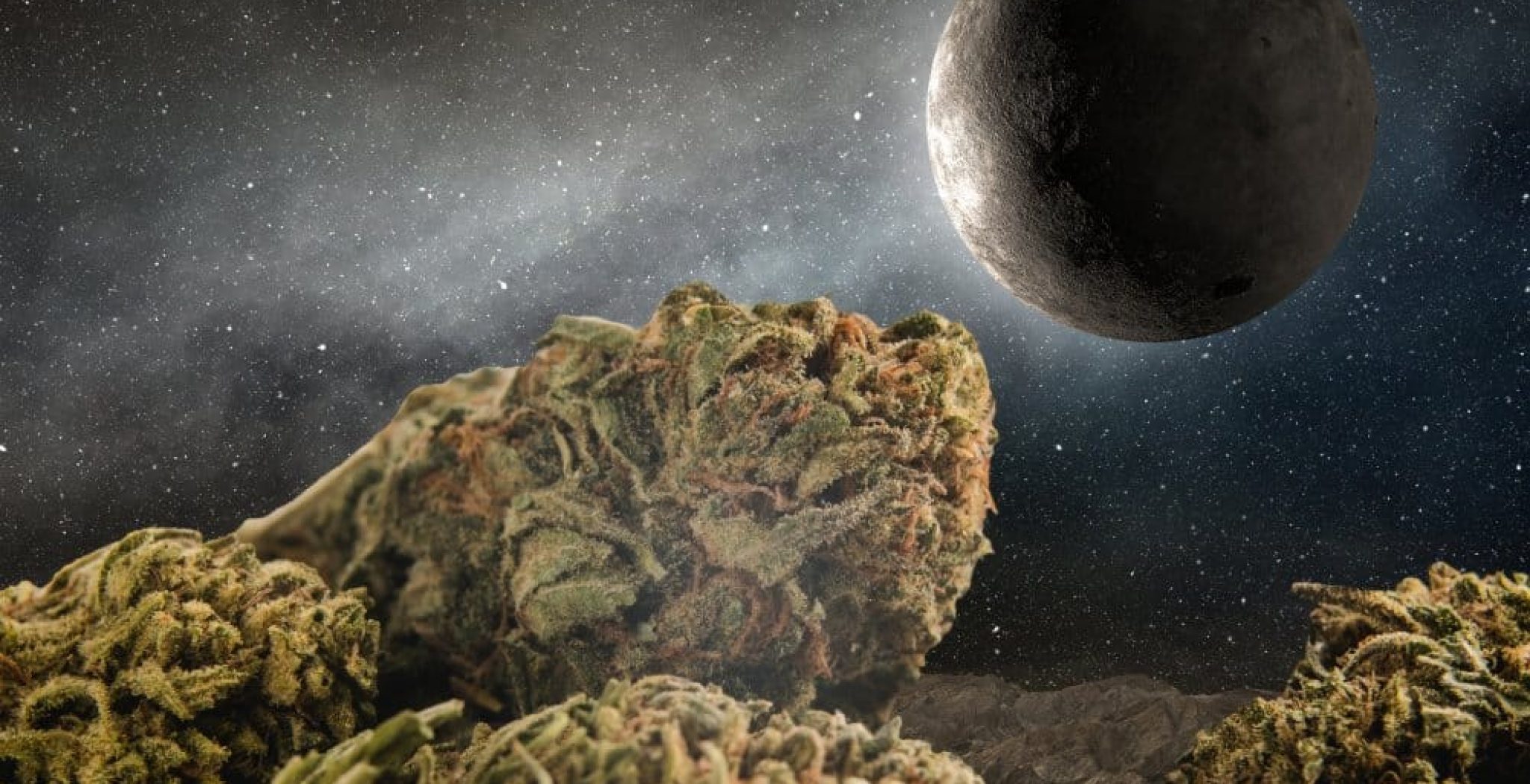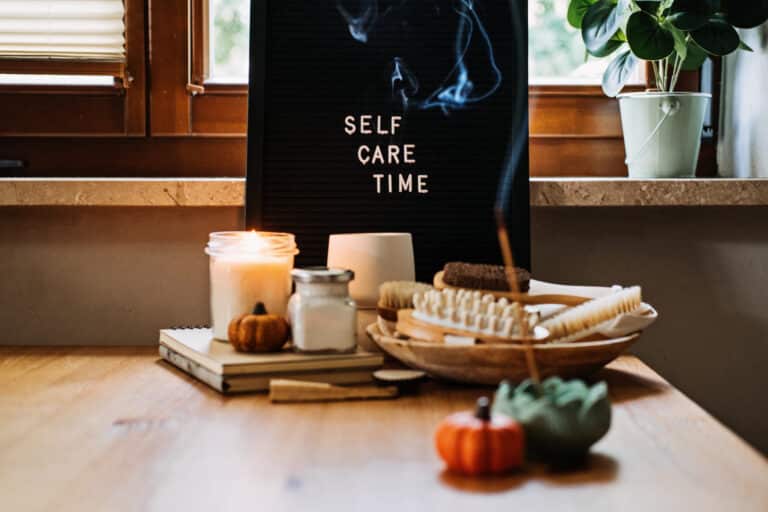Marijuana Moon Rocks have emerged as a premium product in the cannabis market, capturing attention for their exceptional potency and unique composition. Often hailed as the “champagne” of cannabis products, Moon Rocks has a reputation that intrigues both seasoned cannabis enthusiasts and curious newcomers alike.
What Are Marijuana Moon Rocks?
Marijuana Moon Rocks are a fascinating and potent product in the world of cannabis. They are not just a type of marijuana but rather a unique concoction that combines multiple forms of cannabis into a single, extremely potent item. Their creation involves several steps, each adding to the overall strength and experience.
Composition and Creation
The process of making Moon Rocks starts with a high-quality cannabis bud, often a dense, well-cured nugget from a high-THC strain. This bud forms the core of the Moon Rock. The next step involves the bud being thoroughly coated in hash oil, a concentrated form of cannabis that is sticky and rich in THC. Hash oil significantly amplifies the potency of the bud.
Once the bud is coated in hash oil, it is rolled in kief. Kief, or pollen or dry sift, is a collection of the resin found on cannabis flowers. These glands contain the cannabinoids and terpenes that give marijuana its effects and flavors. The kief layer adds another level of THC to the Moon Rocks and contributes to a more complex flavor profile.
Appearance and Texture
The final product, the Moon Rock, is a small, dense nugget that often resembles a rocky, otherworldly material – hence the name “Moon Rock.” They are typically sticky to the touch due to the hash oil and have a coating of kief that gives them a slightly fuzzy appearance. The colors of Moon Rocks can vary depending on the strain of cannabis used and the color of the kief, often resulting in an intriguing, multicolored appearance.

THC Content and Potency
One of the most notable aspects of Moon Rocks is their high THC content. While regular cannabis strains might contain 20% to 30% THC, Moon Rocks can have a THC concentration as high as 50% or more. This makes them one of the most potent forms of cannabis available, a true testament to their nickname as the “champagne” of the cannabis world.
Marijuana Moon Rocks represent a pinnacle of potency and craftsmanship in cannabis products. They are a testament to the creativity and innovation within the cannabis community, offering a distinct and powerful experience for those looking to explore the depths of what cannabis can offer.
The History and Rise to Fame
The creation of Marijuana Moon Rocks is more than just an advancement in cannabis product development; it’s deeply rooted in cannabis culture and innovation. While the exact origin of Moon Rocks is somewhat shrouded in the smoke of cannabis history, their popularization is widely credited to the West Coast hip-hop scene. It’s here, in the crucible of cultural and cannabis innovation, that Moon Rocks began to take shape.
Kurupt and the Popularization
The journey of Moon Rocks into the limelight is inextricably linked to West Coast rapper Kurupt (Ricardo Emmanuel Brown) and his partner Dr. Zodiak (Daniel Laughlin). Around 2014, Kurupt and Dr. Zodiak began marketing their version of Moon Rocks, catapulting the product into a wider public consciousness. They commercialized Moon Rocks and branded them, with Kurupt’s Moonrock becoming a flagship product. This move significantly transformed Moon Rocks from a niche cannabis curiosity to a mainstream phenomenon.
Evolution and Variations
Following their rise to fame, Moon Rocks have evolved, with various dispensaries and producers creating their versions. While the elemental composition remains the same – a nugget of cannabis dipped in hash oil and rolled in kief – variations in strains, types of hash oil, and kief have led to a diverse range of Moon Rocks. Each variation offers a unique profile regarding flavor, potency, and experience, catering to consumer preferences.
Today, Marijuana Moon Rocks stand as a testament to the creativity and ingenuity of cannabis culture. They represent not just a high-potency product but also the evolution of cannabis as a consumer product. From their underground origins to their current status as a coveted item in dispensaries, Moon Rocks have left an indelible mark on the landscape of cannabis consumption.
Potential Therapeutic Effects
Marijuana Moon Rocks, with their high concentration of THC, CBD, and other cannabinoids, offer a potent version of the therapeutic effects found in regular cannabis. The combination of these cannabinoids and terpenes (the compounds that give cannabis its aroma and flavor) can result in an enhanced entourage effect. This effect suggests that the various components of cannabis work together synergistically, potentially increasing the medicinal benefits.
Pain Management
One of the most significant therapeutic uses of cannabis is pain relief, and Moon Rocks may offer potent pain management benefits. Their high THC content can be particularly effective in alleviating chronic pain, including conditions like neuropathy and arthritis. The analgesic properties of THC, combined with the anti-inflammatory effects of CBD found in Moon Rocks, can provide comprehensive pain relief.
Mental Health Benefits
Cannabis is increasingly being studied for its effects on mental health, particularly for conditions like anxiety and depression. Moon Rocks might offer amplified benefits in this area due to their potent combination of cannabinoids. THC can induce relaxation and euphoria, which may alleviate symptoms of anxiety and stress. However, it’s important to note that the high THC content can also exacerbate anxiety in some individuals, necessitating careful and moderate use.
Nausea and Appetite Stimulation
For patients undergoing treatments like chemotherapy, which often cause nausea and loss of appetite, Moon Rocks can offer significant relief. THC is known for its anti-emetic (anti-nausea) properties and ability to stimulate appetite, commonly called the “munchies.” This can be particularly beneficial for individuals struggling with weight loss or malnutrition due to illness.

Sleep Disorders
Moon Rocks may also be helpful for individuals with sleep disorders. The sedative effects of high THC products can aid in reducing the time it takes to fall asleep and increasing the duration of deep sleep, which is crucial for restorative rest.
Potential in Neurological Disorders
There is ongoing research into the effects of cannabinoids on neurological disorders. The neuroprotective properties of cannabinoids found in Moon Rocks could offer benefits in conditions like multiple sclerosis, epilepsy, and even potentially slow the progression of neurodegenerative diseases like Alzheimer’s and Parkinson’s.
While Marijuana Moon Rocks offer a range of potential therapeutic benefits, it is crucial to approach them with caution due to their high potency. They should be used judiciously, especially by individuals new to cannabis or those with lower tolerance. As with any form of cannabis used for medicinal purposes, consultation with a healthcare professional is advised to ensure safe and effective use.
Health Risks and Safety Concerns
Marijuana Moon Rocks are distinguished by their exceptionally high THC content, which can pose several health risks, especially for individuals who are new to cannabis or have a low THC tolerance. High levels of THC can lead to more intense psychoactive effects, which might not be pleasant for all users.
Risk of Overconsumption and Intense Psychoactive Effects
The potency of Moon Rocks increases the risk of overconsumption, which can result in intense psychoactive experiences. These experiences might include severe anxiety, paranoia, panic attacks, and, in rare cases, psychotic episodes. Users unfamiliar with high THC products are particularly vulnerable to these adverse effects.
Impairment of Cognitive and Motor Functions
Consuming Moon Rocks can lead to significant impairment of cognitive and motor functions. This impairment can affect a user’s ability to perform tasks that require attention, coordination, and judgment, such as driving or operating machinery, leading to increased risks of accidents and injuries.
Physical Side Effects
Physically, overconsumption of Moon Rocks can cause symptoms like dizziness, nausea, and vomiting, sometimes referred to as Cannabinoid Hyperemesis Syndrome. THC can also cause
increased heart rate and in some cases, chest pain. These symptoms can be particularly concerning for individuals with pre-existing heart conditions or those susceptible to cardiovascular issues.
Development of Tolerance and Dependence
Regular use of high-potency cannabis products like Moon Rocks can lead to the development of tolerance, requiring increasingly larger amounts to achieve the same effects. This can potentially escalate to dependence, where the user may experience withdrawal symptoms when not using the product.
Impact on Mental Health
Long-term use of high THC products may have an impact on mental health. Research suggests a correlation between regular high-potency cannabis use and an increased risk of mental health disorders, including exacerbation of pre-existing conditions like schizophrenia or bipolar disorder.
Safety Precautions for Use
Given the risks associated with Moon Rocks, the following safety precautions are advisable:
- Start with a Small Amount: For those new to Moon Rocks or with low THC tolerance, it’s crucial to start with a very small amount to gauge individual reaction to the high THC content.
- Avoid Operating Machinery: Due to the impairing effects on cognition and motor skills, users should avoid driving or operating heavy machinery after consumption.
- Stay Hydrated: Consuming Moon Rocks can lead to dry mouth and dehydration, so it’s important to stay well-hydrated.
- Safe Environment: Use Moon Rocks in a safe, familiar environment, especially for those trying them for the first time.
- Seek Medical Advice: Individuals with pre-existing health conditions, particularly heart or mental health issues, should consult with a healthcare professional before using Moon Rocks.
While Marijuana Moon Rocks can offer an intense and potentially beneficial cannabis experience, they come with significant health risks and safety concerns, primarily due to their high THC content. Understanding and respecting these risks, along with taking appropriate precautions, is essential for anyone considering using Moon Rocks, whether for recreational or medicinal purposes.
‘Greening Out’ and THC Overdose
“Greening Out” or THC overdosing is a term often used to describe the uncomfortable and sometimes distressing effects that can occur after consuming large amounts of THC, the primary psychoactive compound in cannabis. This phenomenon is more likely to happen with potent products like Marijuana Moon Rocks, which have significantly higher THC levels than typical cannabis strains.
Causes of “Greening Out”
Understanding the causes of “Greening Out” is crucial in both preventing and managing this uncomfortable experience. This phenomenon, particularly associated with high-THC cannabis products like Marijuana Moon Rocks, arises from several key factors. These factors can vary from individual physiological responses to the potency of the consumed product. Here, we explore the primary causes that contribute to this reaction, offering insight into why some individuals may experience greening out more intensely or frequently than others.
- High Potency of THC: The exceptionally high THC concentration in products like Moon Rocks is a primary cause of greening out. The body may be overwhelmed by the large amount of THC, leading to adverse reactions.
- Low Tolerance: Individuals with low tolerance to THC, such as occasional users or those new to cannabis, are more susceptible to greening out.
- Method of Consumption: Ingesting THC, especially through smoking or vaporizing Moon Rocks, can lead to rapid absorption of high THC levels, increasing the risk of greening out.
- Individual Differences: Factors such as body weight, metabolism, and individual sensitivity to THC can also influence the likelihood of greening out.
Symptoms of “Greening Out”
Greening out can manifest through a range of symptoms that affect both the body and mind, including:
- Physical Symptoms: Nausea, vomiting, dizziness, headache, lethargy, increased heart rate, and sweating.
- Psychological Symptoms: Anxiety, paranoia, panic attacks, disorientation, hallucinations, and temporary psychotic episodes in severe cases.
Remedies and How to Respond to a Green Out
If someone is experiencing a green out, the following steps can help alleviate the symptoms:
- Stay Calm: The first step is to stay calm and reassure the individual that the effects are temporary and will pass.
- Find a Safe Space: Move to a quiet, safe space where the individual can relax and feel secure.
- Hydration: Drinking water or other hydrating fluids can help alleviate symptoms like dry mouth and dizziness.
- Deep Breathing: Encourage deep, controlled breathing to help reduce anxiety and panic symptoms.
- Distraction and Comfort: Engaging in calming activities, listening to soothing music, or using comforting objects can help distract from the distressing symptoms.
- Avoid More THC: It’s important not to consume any more THC while recovering from a green out.
- Seek Medical Attention if Necessary: If symptoms are severe or do not improve, seeking medical attention is advisable.

Preventing “Greening Out”
Prevention is key when it comes to greening out, especially when using high-THC products like Moon Rocks. This includes starting with very small amounts, understanding personal tolerance levels, and avoiding mixing with other substances, especially alcohol.
“Greening Out” is an important consideration for anyone using high-potency cannabis products. Understanding the causes, recognizing the symptoms, and knowing how to respond and prevent such occurrences are crucial for a safe and enjoyable cannabis experience.
Legal Considerations and Safety Tips
As with any cannabis product, legality is a crucial consideration. Moon Rocks fall under the same legal status as other forms of marijuana, which varies by location. Users should be aware of their local laws before purchasing or consuming Moon Rocks. Safety tips include staying hydrated, consuming in a safe environment, and consulting healthcare professionals when using cannabis for medical purposes.
Help is Available
While Marijuana Moon Rocks present an intriguing and potent option within the cannabis landscape, it’s essential to approach their use with informed caution. Understanding their composition, potential therapeutic effects, associated health risks, and the phenomenon of “Greening Out” is crucial for anyone considering exploring this potent form of cannabis.
Cannabis, especially in potent forms like Moon Rocks, can lead to misuse and addiction in some cases. It’s important to recognize and address these issues promptly. If you or someone you know is struggling with cannabis use or any form of substance addiction, reaching out for professional help is a critical step.
The Southern California Sunrise Recovery Center is a dedicated facility offering comprehensive support and treatment for those facing addiction challenges. With a focus on personalized care and a holistic approach to recovery, the center provides the resources and support necessary to navigate the journey toward healing and sobriety.
Whether you’re seeking help for yourself or a loved one, the Southern California Sunrise Recovery Center offers a compassionate, professional environment to address addiction. Our experienced team is committed to providing the guidance and support needed to overcome addiction and move towards a healthier, substance-free life.
References
- Santos-Longhurst, A. (2022, October 5). Which weed strains are highest in THC? Healthline. https://www.healthline.com/health/highest-thc-strain
- Scully, C. (2014). Substance dependence. In Elsevier eBooks (pp. 749–773). https://doi.org/10.1016/b978-0-7020-5401-3.00034-5
- Wikipedia contributors. (2023, October 25). Kief. Wikipedia. https://en.wikipedia.org/wiki/Kief
- Leafly. (2022, May 9). What are Moon Rocks (Weed) and How to Smoke Them | Leafly. https://www.leafly.com/learn/consume/smoke/moon-rocks
- Hasse, J. (2019, April 18). Kurupt, Legendary Snoop & 2Pac Collaborator, Talks MoonRocks and History With Weed. High Times. https://hightimes.com/entertainment/kurupt-legendary-snoop-2pac-collaborator-talks-moonrocks-history-weed/
- National Academies Press (US). (2017, January 12). Therapeutic effects of cannabis and cannabinoids. The Health Effects of Cannabis and Cannabinoids – NCBI Bookshelf. https://www.ncbi.nlm.nih.gov/books/NBK425767/
- Mack, A. (2000). MARIJUANA AND PAIN. Marijuana as Medicine? – NCBI Bookshelf. https://www.ncbi.nlm.nih.gov/books/NBK224384/
- Scherma, M., Muntoni, A. L., Riedel, G., Fratta, W., & Fadda, P. (2020). Cannabinoids and their therapeutic applications in mental disorders. Dialogues in Clinical Neuroscience, 22(3), 271–279. https://doi.org/10.31887/dcns.2020.22.3/pfadda
- Parker, L. A., Rock, E. M., & Limebeer, C. L. (2011). Regulation of nausea and vomiting by cannabinoids. British Journal of Pharmacology, 163(7), 1411–1422. https://doi.org/10.1111/j.1476-5381.2010.01176.x
- Vaillancourt, R., Gallagher, S., Cameron, J. D., & Dhalla, R. (2022). Cannabis use in patients with insomnia and sleep disorders: Retrospective chart review. Canadian Pharmacists Journal / Revue Des Pharmaciens Du Canada, 155(3), 175–180. https://doi.org/10.1177/17151635221089617
- Mack, A. (2000a). MARIJUANA AND NEUROLOGICAL DISORDERS. Marijuana as Medicine? – NCBI Bookshelf. https://www.ncbi.nlm.nih.gov/books/NBK224385/
- Feeney, K., & Kampman, K. M. (2016). Adverse effects of marijuana use. The Linacre Quarterly, 83(2), 174–178. https://doi.org/10.1080/00243639.2016.1175707
- Johnson, G. A., Guerra, L., & Oxner, A. (2023). A case of panic attacks developing after 10 years of chronic cannabis use in a patient with no prior psychiatric history. Cureus. https://doi.org/10.7759/cureus.34197
- Know the risks of marijuana. (2023, February 27). https://www.samhsa.gov/marijuana
- Chu, F. (2023, July 3). Cannabinoid hyperemesis syndrome. StatPearls – NCBI Bookshelf. https://www.ncbi.nlm.nih.gov/books/NBK549915/
- Harvard Health. (2022, January 19). Marijuana and heart health: What you need to know. https://www.health.harvard.edu/heart-health/marijuana-and-heart-health-what-you-need-to-know
- Ramaekers, J. G., Mason, N. L., & Theunissen, E. L. (2020). Blunted highs: Pharmacodynamic and behavioral models of cannabis tolerance. European Neuropsychopharmacology, 36, 191–205. https://doi.org/10.1016/j.euroneuro.2020.01.006
- Patel, S., Khan, S., Saipavankumar, M., & Hamid, P. (2020). The Association between cannabis use and schizophrenia: Causative or curative? A systematic review. Cureus. https://doi.org/10.7759/cureus.9309
- Khan, M. A. (n.d.). Cannabis-Induced Bipolar Disorder with Psychotic Features: A Case Report. PubMed Central (PMC). https://www.ncbi.nlm.nih.gov/pmc/articles/PMC2811144/
- Wagener, D., MA. (2023, November 28). Can You Overdose on Weed with THC? GoodRx. https://www.goodrx.com/classes/cannabinoids/can-you-overdose-on-weed-with-thc
- Msw, D. M. (2023, May 9). Believe it or not, you can overdose on weed. Psychology Today. https://www.psychologytoday.com/us/blog/some-assembly-required/202305/believe-it-or-not-you-can-overdose-on-weed
- Kroes, I., MD. (2023, August 22). What is greening out? meaning, symptoms, & what to do. wikiHow. https://www.wikihow.com/What-Is-Greening-Out
- Hansen, C., Alas, H., & Davis, E., Jr. (2023, November 8). Where is marijuana legal? A guide to marijuana legalization. US News & World Report. https://www.usnews.com/news/best-states/articles/where-is-marijuana-legal-a-guide-to-marijuana-legalization






